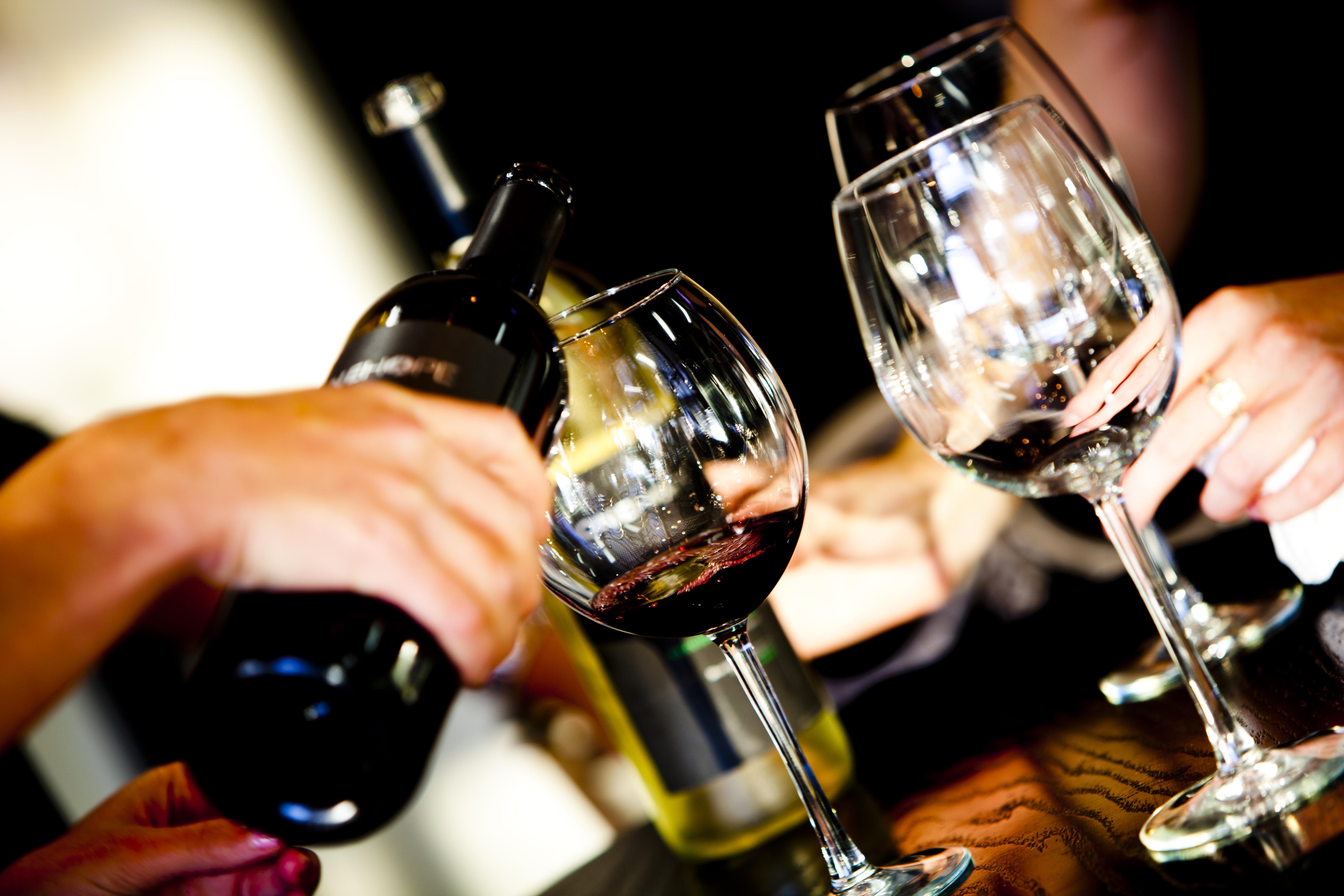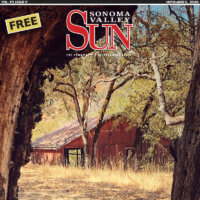Is opening a downtown tasting room a smart business move? A wine industry insider – the executive vice president of Silicon Valley Bank’s Wine Division – examines the politics and economics of urban tasting rooms.
By Rob McMillan | Special to The Sun
Falling on the heels of a growing anti-tourism movement, of late I’ve taken calls from officials in three particular cities that are now considering tightening regulations, or altogether banning the growth of downtown wine tasting rooms.
What else can officials do to make the wine business more difficult? That’s what many are asking. Why are municipalities working so hard to hinder success of an industry that helps pull in millions in local occupancy taxes, and donates many more millions to charity? Answer: it’s just politics.
The wine industry isn’t sufficiently engaging in the debate so we have ourselves to blame in part. We have a fight on our hands but don’t show up in force to planning commission meetings and support applications.
We make it harder on officials who only hear from their constituent nay-saying minority. To the credit of the officials, one thing they are doing is asking around for data and facts that might help balance the debate, but I’m wondering if opening a downtown or urban tasting room is even a good business decision in the first place?
Banning tasting rooms
Should local officials ever consider a moratorium on new tasting rooms as we read is the current case in some towns? My answer is absolutely yes they should debate and consider it because land-use and sensible zoning can have a positive impact for everyone in a community, including wineries. It’s a worthwhile conversation. No town needs all tasting rooms, grocery stores, or food trucks. Parking is another consideration for any business use.
A well-considered downtown with tourism as a draw should have complimentary businesses to pull in visitors. Getting the right blend of business isn’t easy though, especially when anti-change elements dominate the discussion, as has happened in Saint Helena CA. St. Helena is in serious financial distress and is the poster-child for the unintended consequence of wishing things were like “the good old days” and ignoring tax and fee opportunities from tourism.
But there are other important business questions to be asked before getting to the permit stage: Is it a good business decision to open a downtown tasting room in the first place? Will it be successful? What conditions will make it successful or kill it? If there are already a lot of tasting rooms, is there room for one more or will that be one too many?
Success isn’t guaranteed or well-defined
In truth, urban tasting rooms are a relatively new phenomenon and the jury is still out on their true effectiveness. But how is effectiveness defined? Winery owners get locked into thinking that if there is tourist traffic, the exposure alone will be good for the brand. But is traffic truly success? From my vantage point, the number of visitors and incremental tasting fees are not the most important metrics. But take San Francisco as an example. There you have plenty of tourists and foot traffic.
Several wineries have tried opening in San Francisco with decidedly mixed results. Those who have already closed came to the conclusion that the tourists were coming to the city for specific reasons, and wine tasting wasn’t on the list. They discovered that the tasting experience was more like a bar, and visitors neither joined their wine club or took wine home with them.
Opening in a tourist area isn’t necessarily a key to certain success. While the tasting bar might glimpse improvement in added tasting fee income for the business, tasting fees alone don’t cover costs.
In the planning stage, another mistake is made when owners believe the conversion rate to the wine club can be as good at a downtown location as it is at the winery. It’s not. And finally, owners forget the context. No matter what your fee is at the winery, you have to fit in or clearly justify your tasting benefits and fee structure, within the downtown context.
Too much of a good thing
There are two benefits of a tasting room. The first benefit is giving your guests an experience. It’s getting them by the trial component of the purchase decision, but the type of experience plays into that, locking the brand in their mind.
The second and more important thing you are trying to do is get them into your wine club, or at a minimum collecting visitor contact data. As far as I can tell from polling wineries over time, the conversion rate of visitors into the wine club in a downtown tasting room isn’t as high when compared with the tasting room at the winery. It’s a different experience.
There is an economic concept called Cluster Theory and a related one called the Agglomeration Effect. In retail, these are the notions that explain the development and success of malls, and it helps to explain one good economic reason to have concentrated tasting rooms.
People come together in a mall or urban tourist area for an experience and convenience. Complementary and cooperating companies can do better together in a condensed location versus being spread out in the hills. That works well as long as the mix of companies is correct and price wars don’t escalate among shops selling similar goods.
But what’s the right number of tasting rooms in a town? In my opinion, the regulatory choice to limit tasting rooms to one per block as was done in Healdsburg isn’t a good solution. It’s more effective to locate 3-4 tasting rooms in clusters on a block. That draws tourists and allows the wineries to create clustered experiences with adjoining and cooperating tasting rooms and businesses. But there is a limit. How many urban tasting rooms are too many? It turns out we have a good example.
The curious politics in Santa Barbara County
The towns of Buellton, Lompoc, and Los Olivos have ended up with too many tasting rooms, paradoxically because Santa Barbara County is trying to protect the rural character of the county by discouraging visitation at the wineries themselves.
Thus the tourist traffic that otherwise would have been spread out throughout the rural countryside, has been focused down into local choke points within the towns. The situation has negatively impacted both the town and the wine business.
Los Olivos is a prime example. It’s a small, unincorporated area of about 1,100 people. There are somewhere around 30 tasting rooms crammed into roughly four to five blocks. Parking on the weekends is difficult, and the visitor experience is sub-optimal.
While owners and employees do the best they can in Santa Barbara, for some visitors the experience is closer to a pub crawl than a luxury experience. As a result, the County of Santa Barbara has some of the worst performing tasting room and club metrics.
The conclusion of a recent industry conference in the county was the visitors from Los Angeles were stopping for lunch, but driving through to Paso Robles where tourists get better experiences at the wineries.
The right circumstances for urban tasting rooms
My advice to wineries is to think hard before opening an urban or downtown tasting room, and define success metrics more clearly. There are good reasons to do it but getting tasting room income from fees isn’t the right one. Getting people into the wine club is the best one, but downtown is a harder sell for club conversions.
I’d make sure the story was told about the winery in the remote tasting room. You have to have the connection to the site where the wine is made, and hopefully encourage visitors to make a visit there. Pictures, wine making equipment, soil samples, barrels filled with wine for a barrel sample option is a possibility, and videos are all good options to tell the story.
In the final analysis, you are selling wine. The facility has to be authentic and represent the winery and brand. If its looks more like a themed restaurant or sports bar with antiques and memorabilia on the walls, you’re selling the wrong thing. Does anyone think a bar selling one brand is a good idea?
Rob McMillan is executive vice president and founder of Silicon Valley Bank’s Wine Division based in Saint Helena, California.




Rob McMillan strikes an uneasy and biased balance here on the issues at stake. As I see it, this is a perfect case of illustrating what the Sonoma Valley Fund’s Hidden in Plain Sight study called a major disconnect in Sonoma Valley. The root of the disconnect is a lack of awareness, respect, and knowledge for different ways of viewing the same thing, and the systemic consequences therein as they play out into the social, economic, and environmental landscape. This could be seen as liberal vs. conservative, or as money values vs. social equity/ environmental justice values.
Rob frames an argument pitting an “anti-tourism movement”, and a “nay-saying minority”, against “data and facts that might help balance the debate.” The boogie man of tightening regulations is invoked and in the end, he says it’s just politics. What about how a financialized 1% has come to undemocratically dominate policy in the county and USA? Who is the real minority here?
If we really want data and facts, I suggest officials also looking at public forums like a past NapaVision 2050 conference on sustainable tourism. There, indicator-based triple bottom line metrics were presented. These are data and facts, just of a different flavor. Here is a worldview that frames things differently than from a financialized viewpoint. What is costly regulation to one, is a public benefit to another. Public policy here needs to take into account all legit and strong arguments, and not fall into a pit of negative judgment of different views that partisans are so good at doing.
Public policy would be much better vetted by using a triple bottom line frame, rather than one that implicitly sees an economic bottom line only, as the only real fact and goal of life.
I’m sure Rob’s cohort sees my cohort in a similarly jaded way. I’m also sure people of good will can work stuff like this out and come to a mutually reasonable place as to role of (wo)man and society.
As long as legit policy horizon differences are seen as a Machiavellian political battle to be won or lost, as a zero-sum game, then stakeholders with different values will never find a way to cooperate in a win-win scenario.
Rob’s idea of a limit of three or four tasting rooms per block is a good start. That could be negotiated to two. And the breakdown of the intra-wine industry tension of urban direct marketing outlets vs rural winery experience, is info all should know about. Inflated cost of ag land, corporate ownership, there are reasons why there is so much pressure for tasting rooms. This is what the market has wrought, and why some conscious shaping is in order.
What we need from pubic officials is the will and ability to see all sides here, and to steer the conversation to a place where all the various frames of facts and data get into the mix. If this moratorium process gets boiled down to a meme of limits vs. no limits, officials need to show they are educated decision makers, and not mere partisans themselves.